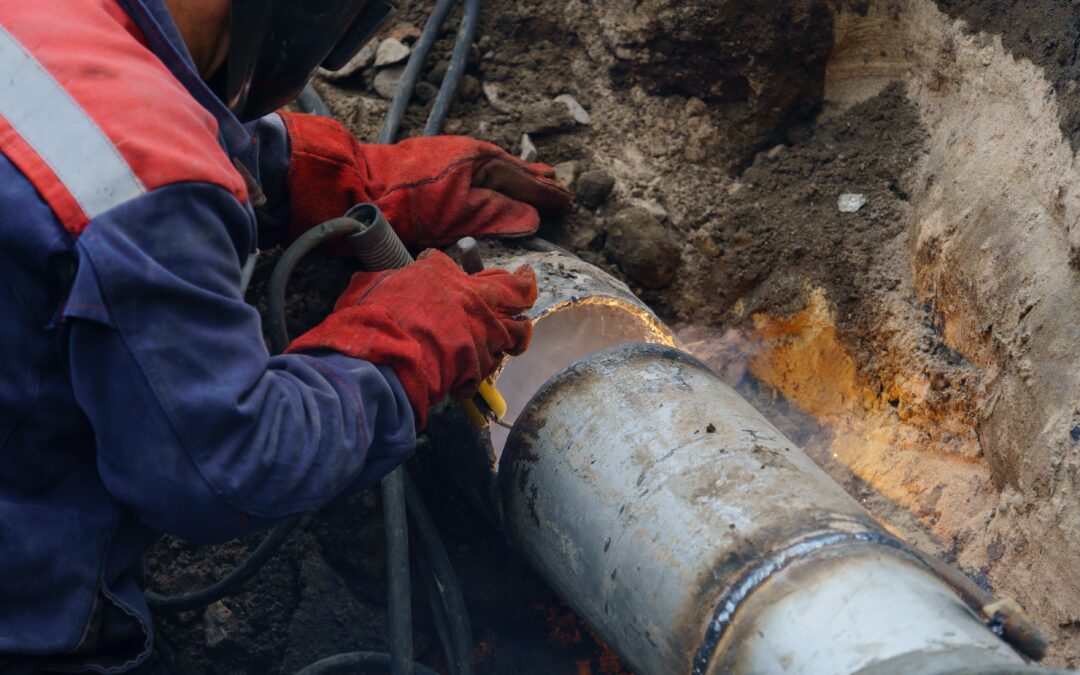Cast iron pipes have been a staple in plumbing systems for decades due to their durability and longevity. However, like any other material, they can deteriorate over time, leading to leaks and other issues. Fortunately, repairing a cast iron pipe is feasible with the proper knowledge and tools. In this blog, we’ll walk you through cast iron pipe repairing, including how to cut a cast iron drain pipe.
Understanding Cast Iron Pipe Damage:
Before diving into the repair process, it’s crucial to understand the typical damage to cast iron pipes. Corrosion, rust, cracks, and joint failures are typical issues homeowners face with cast iron plumbing systems. Identifying the specific type and location of damage will guide your cast iron plumbing repair approach.
Tools and Materials You’ll Need:
- Safety gear (gloves, goggles, and mask)
- Pipe cutter or reciprocating saw with a cast iron cutting blade
- Cast iron pipe repair clamps or sleeves
- Epoxy compound or putty
- Sandpaper or wire brush
- Pipe wrenches
- Plumbers’ tape or sealing compound
- Replacement fittings (if necessary)
Steps to Repair Cast Iron Pipes:
Cast iron plumbing repair requires careful attention to detail and adherence to specific steps to ensure a successful outcome. Here’s a detailed breakdown of the steps involved in repairing cast iron pipes:
Assessment and Preparation:
Before you begin any repair work:
- Assess the extent of the damage to the cast iron pipe.
- Look for signs of corrosion, rust, leaks, or cracks.
- Determine the location and size of the damaged section to plan your cast iron plumbing repair strategy effectively.
Cutting the Pipe:
Once you’ve identified the damaged section of the pipe, it’s time to cut it out. Measure the area to be removed and mark it using a marker or chalk. You can use a pipe cutter or a reciprocating saw equipped with a cast iron cutting blade for cutting.
Removing Corrosion and Rust:
With the damaged section removed, take the opportunity to clean the exposed ends of the remaining pipe. Use sandpaper or a wire brush to remove corrosion, rust, or debris from the pipe ends. Cleaning the surfaces will ensure a secure and effective seal when you apply the repair materials.
Applying Repair Clamps or Sleeves:
Depending on the damage’s severity and the cut section’s size, you may need to use repair clamps or sleeves to cover the exposed area. Position the repair clamp or sleeve over the cut section of the pipe, ensuring that it fits snugly and aligns appropriately with the surrounding pipe.
Sealing with Epoxy Compound:
If the damage is minor and doesn’t require a clamp or sleeve, you can seal the cut section of the pipe using an epoxy compound or putty. Mix the epoxy according to the manufacturer’s instructions and apply it evenly around the cut area. Make sure to cover the entire surface and smooth out any excess epoxy.
Reconnecting and Testing:
Once the repair is complete, reconnect any disconnected fittings or pipes removed during the cutting process. Ensure that all connections are tight and secure to prevent leaks. After reassembly, turn the water supply back on and carefully inspect the repaired area for any signs of leaks or drips.
Preventive Measures:
To avoid future issues with your cast iron pipes, consider implementing preventive measures such as regular inspections, cleaning, and maintenance. Look for any signs of deterioration or corrosion and address them promptly to prevent more extensive damage.
Professional Consultation:
Assessing Complex Issues:
Sometimes, the damage to cast iron pipes may be more extensive or require specialized knowledge. In such cases, seeking professional consultation from a licensed plumber is advisable.
Expert Advice:
Consulting with a professional plumber allows you to benefit from their expertise and insights. They can offer valuable advice on the best course of action for repairing or replacing damaged cast iron pipes, considering factors such as the extent of the damage, the condition of the plumbing system, and cost-effectiveness.
Specialized Equipment:
Professional plumbers can access specialized tools and equipment necessary for specific repair tasks. For example, they may use advanced diagnostic tools to identify hidden leaks or employ specialized techniques for repairing or relining cast iron pipes.
Code Compliance:
Plumbing repairs must often comply with local building codes and regulations. Professional plumbers are familiar with these codes and can ensure that any repairs or installations meet the requirements, reducing the risk of compliance issues or future complications.
Peace of Mind:
By entrusting your cast iron pipe repair to a professional plumber, you can know that the job will be done correctly and efficiently. Professional plumbers stand behind their quality and can provide warranties or guarantees for their services, offering added reassurance and protection.
Emergency Situations:
Professional plumbers offer emergency services to address the issue promptly in a plumbing emergency involving cast iron pipes, such as a burst or severely damaged pipe. Their swift response can help minimize water damage and restore functionality to your plumbing system as quickly as possible.
Conclusion:
Repairing cast iron pipes requires careful planning, the right tools, and attention to detail. By following the steps outlined in this guide, you can effectively address common plumbing issues and extend the lifespan of your cast iron plumbing system. Remember to prioritize safety and consult a professional if you encounter complex problems beyond your expertise. With proper maintenance, your cast iron pipes can continue to serve your home reliably for years.
At-Ease Plumbing offers expert consultation and regular repair maintenance services. Our licensed plumbers assess complex issues, provide specialist advice, conduct scheduled inspections, and offer proactive solutions to ensure optimal performance and longevity of your plumbing system.

